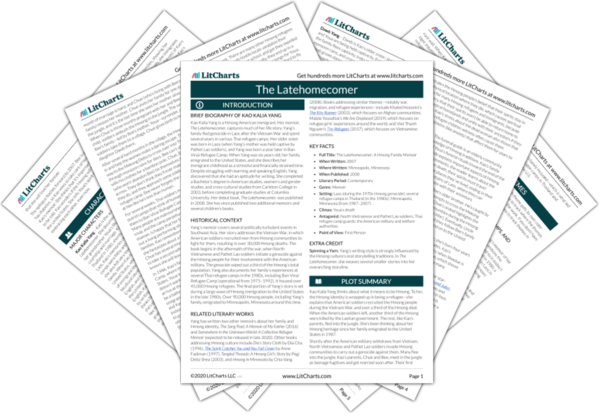Kao develops deep anxiety after seeing a woman die in Phanat Nikhom Transition Camp. Kao believes that she’ll be haunted by the dead woman’s spirit unless she immigrates to the United States and can leave the woman’s spirit behind in Thailand. Her reaction to the dead woman illustrates the Hmong people’s belief that their spirits stay in the physical location where they die, which causes spiritual anxiety for many Hmong refugees and immigrants, because they worry that their spirits won’t be able to return home to their ancestral homelands and unite with their ancestors if they die in exile. Kao’s stress about the dead woman also shows that the traumas refugee children witness often cause them emotional problems (like anxiety) that affect them for years to come.
